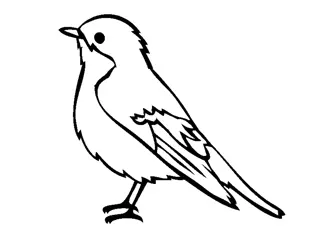Fascinating World of Penguins
Explore the diverse habitats, unique characteristics, and survival strategies of penguins, from the majestic Emperor penguins in Antarctica to the adorable Little Blue penguins in Australia. Discover how they stay warm, why they are black, and the predators they face in the wild. Dive into the captivating world of these fascinating birds through stunning images and intriguing facts.
Download Presentation

Please find below an Image/Link to download the presentation.
The content on the website is provided AS IS for your information and personal use only. It may not be sold, licensed, or shared on other websites without obtaining consent from the author.If you encounter any issues during the download, it is possible that the publisher has removed the file from their server.
You are allowed to download the files provided on this website for personal or commercial use, subject to the condition that they are used lawfully. All files are the property of their respective owners.
The content on the website is provided AS IS for your information and personal use only. It may not be sold, licensed, or shared on other websites without obtaining consent from the author.
E N D
Presentation Transcript
Penguins By: Abigail Higgins
Where do they live? Penguins live on the Galapagos Islands and in Australia, New Zealand, Africa, South America, and the islands that surround Antarctica.
Why are they black? Predators swimming on the ocean surface see black when they look down into the dark water. Penguin s dark backs help them blend in with that black color.
Wings? Their wings, which are usually called flippers, are made for swimming. Penguin s flippers are very hard and strong.
Predators? Penguins have plenty of predators to watch out for. Sea lions, leopard seals, and orca whales all hunt and eat adult penguins.
How do penguins stay warm? Male emperor penguins huddle to help conserve heat. The blubber provides energy for the penguins when they cannot eat. It also helps keep the penguins warm. The down traps air close to the penguin, keeping the penguin warm.
Emperor penguin Emperor penguins stand about three feet tall, making them the largest penguins. They have yellow and orange ear patches. Emperor penguins live in Antarctica during the winter.
Magellanic Penguins Magellanic Penguins live on the southern tip of South America and the islands around Antarctica. They build nests in small burrows and under bushes. Magellanic Penguins feed mostly on squid, anchovies, and sardines.
Little Blue penguins The smallest penguin in the world is the little blue penguin. It is also known as the fairy penguin, the little penguin, or the blue penguin. The little blue penguin is only a foot tall.
Adelie penguins Adelie penguins grow to about two feet in height. Like emperor penguins, Adelie penguins lay their eggs and raise their young in Antarctica. However, they do not live in Antarctica year-round.
King penguins The king penguin is the second largest penguin. It has patches of orange feathers near it s ears. King penguins raise their young during the summer on the islands surrounding Antarctica.
Crested penguins Crested penguins live on the islands south of South America, Africa, Australia, and New Zealand. Crested penguins vary in size from one to two feet tall. All Crested penguins have similar nesting habits. The female crested penguin lays two eggs.























